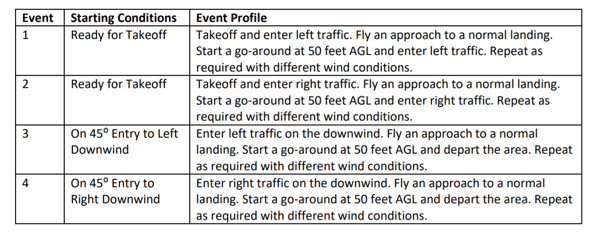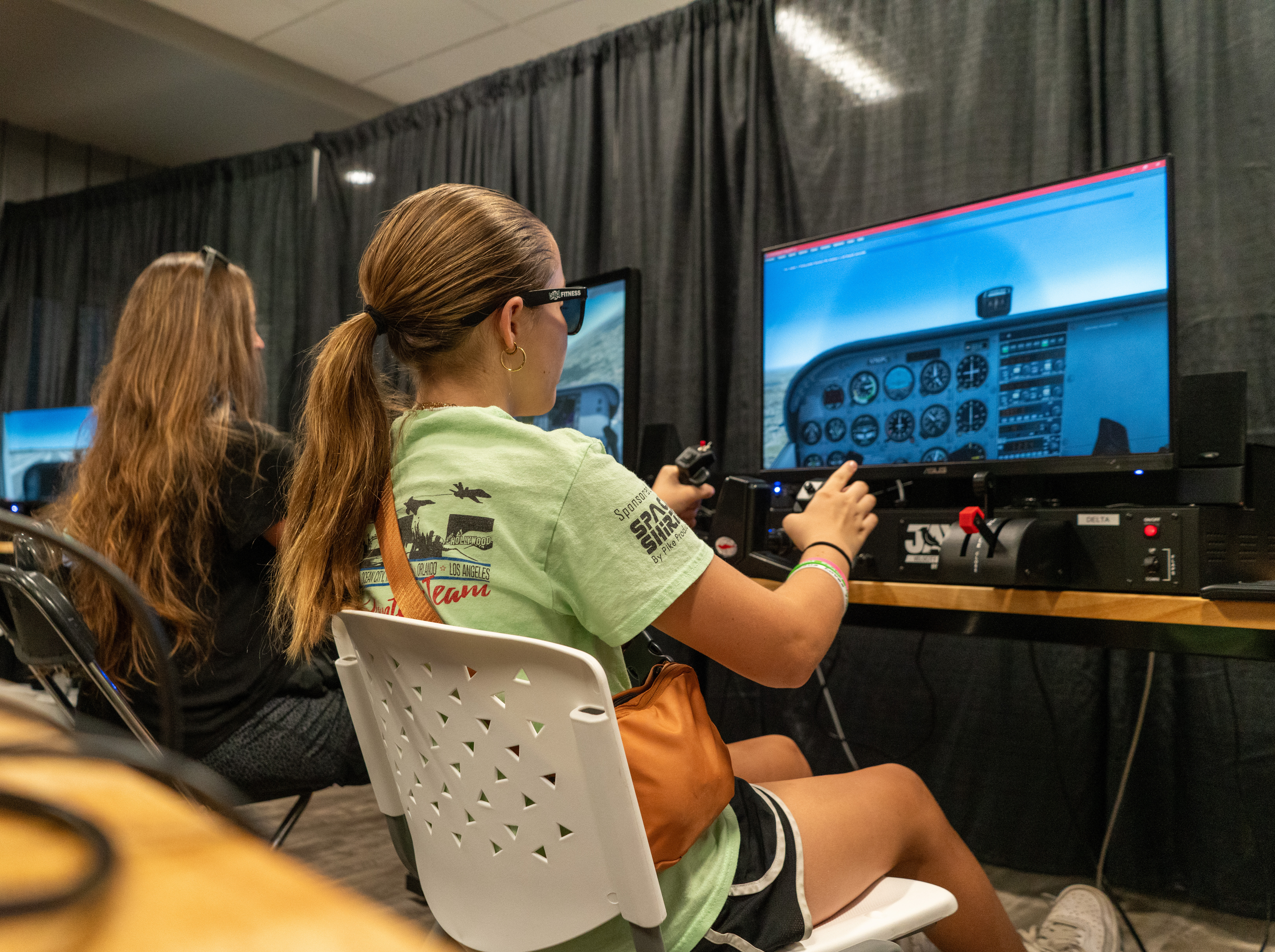How to Create CFI Lesson Plans for the Flight Instructor Checkride
Lesson plans are a significant part of the Certified Flight Instructor (CFI) checkride, and CFI candidates spend countless hours preparing and practicing teaching them. Your Designated Pilot Examiner (DPE) will expect that you not only comprehend flying concepts and aviation responsibilities, privileges, and obligations but that you also can impart them to student pilots.
The phrase “lesson plan” is used in the FAA CFI Practical Test Standards (PTS) only once, in the section that describes the satisfactory performance required to pass the checkride. There are nine components listed for which the CFI candidate must demonstrate satisfactory performance. The ninth and final component is “knowledge of the development and effective use of a course of training, a syllabus, and a lesson plan.”
The PTS does not specify what your lesson plans must incorporate exactly, but the FAA’s Aviation Instructor Handbook (AIH) Chapter 7 says all lesson plans “should include objectives, content to support the objectives, and completion standards.” Beyond those basic guidelines, here a few tips for building out lesson plans to help you succeed on your CFI checkride.
Start With Four Core FAA Publications
You should base your lesson plans on FAA materials. Specifically, these four publications should inform how you develop and teach your lesson plans:
- The FAA Practical Test Standards (PTS)
- The Aviation Instructor's Handbook (Especially Chapter 7 - Planning Instructional Activity)
- The Airplane Flying Handbook
- The Pilot’s Handbook of Aeronautical Knowledge (PHAK)
In the close-knit aviation community, it is common to pass around study materials and resources. If you inherit another CFI’s books, then make sure you are using the most recent versions.
The FAA made several updates to the Aviation Instructor’s Handbook (AIH) in 2020. Notably, Chapter 7 of the AIH now states that the agency “places greater emphasis on the instructor’s role and skill as a teacher and mentor.” The most recent version of the CFI PTS also includes noteworthy changes. For one, it introduced a new task, Runway Incursion Avoidance.
CFI candidates have passed checkrides using other flight instructors' lesson plans or “canned” lesson plans that they purchase on the internet. While nothing specifically prohibits this practice, it will not prepare you to teach the material—for the checkride or real-world flight training. If you purchase lesson plans, confirm that they meet all the elements of the PTS and personalize them to make them your own. You also should spend time practicing your teaching no matter what. Pretend to be a flight instructor by giving mock ground lessons to your CFI and your friends or family members who are not pilots.
Related Content: How to Be a Good Instructor in the Cockpit, Classroom, and Simulator
Understand Task IV: Preflight Lesson Based on a Maneuver to be Performed in Flight
The PTS is designed to eliminate any surprises on checkride day. You should review the PTS and base your lessons on each of the areas of operation listed. It is unnecessary to create lesson plans based on the first area of operation, Fundamentals of Instruction (FOI), but you should be prepared to answer questions about the FOIs from memory.
Although not mandatory, creating lesson plans for Areas of Operation II through VI is a very beneficial exercise, as your DPE will ask you to cover specific elements during your checkride. Having lessons plans for the following areas of the checkride will ensure you meet all the required points in the PTS:
- Technical Subject Areas
- Preflight Preparation
- Preflight Procedures
- Airport and Seaplane Base Operations
However, Areas of Operation VII through XIII need to be your primary focus. The PTS states that the “examiner must select at least one maneuver task from Areas of Operation VII through XIII, and ask the applicant to present a preflight lesson on the selected maneuver as the lesson would be taught to a student.” Areas of Operation VII through XIII include the following:
- Takeoffs, Landings, and Go-Arounds
- Fundamentals of Flight
- Performance Maneuvers
- Ground Reference Maneuvers
- Slow Flight, Stalls, and Spins
- Basic Instrument Maneuvers
- Emergency Operations
Even if you create a beautiful, highly detailed lesson, it will not be satisfactory if it does not satisfy all the elements of the PTS. For example, in the “Technical Subject Areas,” Task B is Runway Incursion Avoidance. This mandatory part of the practical test has 17 elements listed in the PTS. If you prepare a lesson based on the 17 elements, you will not miss anything you are required to address. You should be able to teach a student aeromedical factors, principles of flight, how to create a flight plan, and so on.

Prepare for Every Possible Lesson Plan Scenario
Throughout your lesson plan preparation, it is practically guaranteed that you will cover a large volume of materials that the DPE will not ask about on your checkride. Consider Section VII: Takeoffs, Landings, and Go-Arounds. The PTS notes that “the examiner must select at least two takeoff and two landing Tasks.” Accordingly, your DPE may ask you to teach a lesson on any of the following maneuvers:
- Normal and Crosswind Takeoff and Climb
- Short-Field Takeoff and Maximum Performance Climb
- Normal and Crosswind Approach and Landing
- Slip to a Landing
- Go-Around/Rejected Landing
- Short-Field Approach and Landing
- Soft-Field Approach and Landing
- Power-Off 180° Accuracy Approach and Landing
At their discretion, DPEs can cover much more than the minimum, but it will be nearly impossible for them to cover every possible scenario or maneuver. Yet, as a CFI candidate, you must prepare to teach anything on the ground or in-flight that is covered in the PTS.
Related Content: Creating Scenarios for Scenario-Based Training
Checkride Tip: Pay Close Attention to the Student Pilot Scenario
On checkride day, you will have to apply your lesson plans to a fictional student. The examiner will present you with a scenario-based fact pattern describing your student. Write down everything the examiner tells you. Under no circumstances should you allow the examiner to rush you. Although there are no real “trick” questions on the CFI checkride, this is one area where the DPE could include information to which you need to pay close attention.
One common scenario involves a 5-10 hour private pilot student who has flown a handful of lessons, but your examiner can choose a student at any stage of flight training (even a commercial student). Your examiner may give you an even more detailed student description, such as one of the following:
- A 50-year-old recreational pilot—who last had a medical in 2004—now wants to upgrade to a private pilot certificate
- A 19-year-old girl from Germany, 95 lbs, wants to be an airline pilot
- A 75-year-old man—who has a rotorcraft certificate but has not flown since 1986—wants to cross off a fixed-wing license from his bucket list
- A 15-year-old boy has a dad and grandpa who are airline pilots, and they want him to solo on his 16th birthday
Pay close attention to any situations involving pilots with other certificates (e.g. helicopter, glider, balloon) and pilots who are not US citizens. When presenting your CFI lesson plans, reference your student’s situation frequently. Unless your DPE tells you otherwise, talk to him/her like the student.
Related Content: Training the Next Generation of Pilots
Include Flight Simulator Exercises in Your Lesson Plans
While not mandatory, incorporating simulator practice sessions into your lesson plans is a great way to demonstrate your "role and skill as a teacher and mentor." Flight simulation will help your students master challenging tasks and save money on their flight training. Therefore, creating simulated scenarios and exercises shows that you care about their needs and understand how to utilize the newest training technology to its full extent.
For each lesson plan, think about how you would want your students to accomplish tasks in a flight simulator. In general, you should plan to introduce tasks in a ground session, practice them repeatedly in a simulator, and allow students to demonstrate their progress in an airplane. This method will help your students build confidence and avoid wasted training time. For example, practicing various landing scenarios in a flight simulator allows your students to focus on developing muscle memory for the task at hand instead of taking breaks in the lesson to taxi out again.
The simulator session below is an example of how you can create exercises to help your students perfect their landings.
You’ll use the simulator to practice landing procedures, including power settings, sight pictures, and adjusting for different wind conditions. Try flying left and right patterns for several different runways. Since the key to a great landing is a great approach, don’t try to land. Instead, focus on setting up the approach. Perform a go-around at 50 AGL on each approach and re-enter the pattern.

If you don't know where to start with your flight simulator exercises, check out these training syllabi for Private Pilot and Instrument Rating. They are full of flight simulator practice sessions you can use to build out your lesson plans.
Remember That Passing is About Preparation, Not Perfection
With hundreds of flight training and lesson plan preparation materials available on the internet, it is unnecessary to create lesson plans completely from scratch. You should create at least one though, so you have an acceptable format. Once you create your first lesson plan, have your CFI or another veteran CFI review it. If it is comprehensive enough, you can use the format as a template for other lesson plans.
You can create a binder of paper lesson plans or create electronic lesson plans using PowerPoint or Google Sheets. However, if you plan to use electronic versions of your materials for your CFI checkride, bring a secondary backup of all your materials. For example, if you keep your lesson plans on a laptop, also have an iPad that has the lesson plans available.
Taking the time to practice teaching your lesson plans will help you become comfortable and confident when teaching a lesson to your examiner. If you have a checkride date scheduled and feel that you do not have sufficient time to create and practice using your lesson plans, consider rescheduling to allow yourself more time. Preparation, not perfection, is the key to passing your CFI Checkride.
Share this
You May Also Like
These Related Articles

Tips for the Aspiring Helicopter Pilot Before You Begin Flight Training

How Top Flight Schools Use Full Motion Flight Simulators
